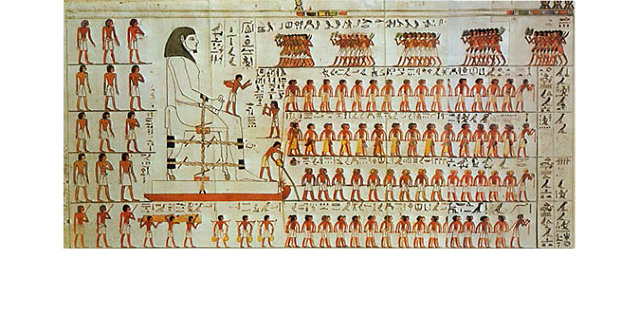
How ancient Egyptians constructed the pyramids is still somewhat of an archeological mystery. Everything from cranes and ramps to oil-slicked slipways to aliens (naturally) have been put forward as possible mechanisms. A group of Dutch physicists has a new hypothesis on how ancient Egyptians managed to drag the colossal stones necessary to build pyramids across the desert. The answer: wet sand.
In a study in the journal Physical Review Letters, researchers from the University of Amsterdam and FOM (the Foundation for Fundamental Research on Matter) recreated a laboratory version of the sledge on which workers hauled heavy stone, and tested how it fared in sand. They found that pulling the sledge across damp sand requires only half the force of hauling it in dry sand. Because the water droplets bind the grains of sand together, wet sand is twice as stiff as dry sand, and doesn’t pile up in front of the sledge as it moves along. (A good tip for sandcastle construction, too.)
The researchers bolstered their theory with a wall painting from around 1880 B.C. found in the tomb of a 12th-dynasty administrator named Djehutihotep, which shows what looks to be a worker pouring water in front of a sledge carrying a large statue.
and Jimnar writes:
The “sidewalk” pavers around the pyramids are arched or curved on one side and flat on the other. The flat face is exactly the same size as the faces of the long sides of the internal blocks used to build the pyramids. The curved sides create a cylinder when 4 of these are strapped around a block. Think a cylinder sliced lengthwise exactly where a square can be scribed onto the face of the cylinder. The sidewalk slab’s or “cab’s” shape was discovered when the buried boats outside the pyramids were excavated. These cabs used this way would reduce the man hours needed to build the pyramids immensely.
I was told by an Egyptologist on site that the reduction in manpower was enough to to limit the needed workforce to the free and available labor available during the flood times of the Nile River each year. It was part of the religious duty to go and serve while the fields were flooded. So essentially work 9 months on your own fields and 3 months for the pharaoh or the priests.
A New Theory On How Ancient Egyptians Built The Pyramids | Co.Design | business + design.